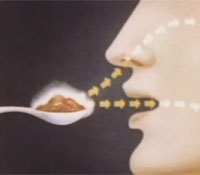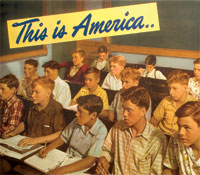Invisibility was one of the most troubling aspects of African American representation in visual culture during the civil rights era. While black characters and subjects were celebrated in Negro periodicals and in the work of African American artists and filmmakers, they were mostly ignored in the mainstream.
In Ralph Ellison’s Invisible Man, the preeminent novel of the civil rights era, the war against racism is seen, in great part, as a fight to overcome society’s pervasive need to obscure or obliterate the realities of race. One of the book’s central metaphors is the power of visibility—of making visible the unseen and unacknowledged.
The modern civil rights movement was intent on challenging the invisibility of race in America—from the bigotry, both virulent and passive, that most white people refused to see to the erasure of black people from the culture at large. These Cold War-era public service posters and films typify this exclusion in their offer of an American dream or a promise of safety available only to white people.
Image Credits/Captions (Click on thumbnails for full image)
Film Still: Medical Aspects of Radiation, 1950. US Armed Forces Special Weapons Project.
This is America: Keep it Free (from the series, “This is America”), 1942. Photomechanical Lithography. 37 1/8 x 24 1/16 in. Courtesy of Sheldon-Claire Company Records, Archives Center, National Museum of American History, Smithsonian Institution

